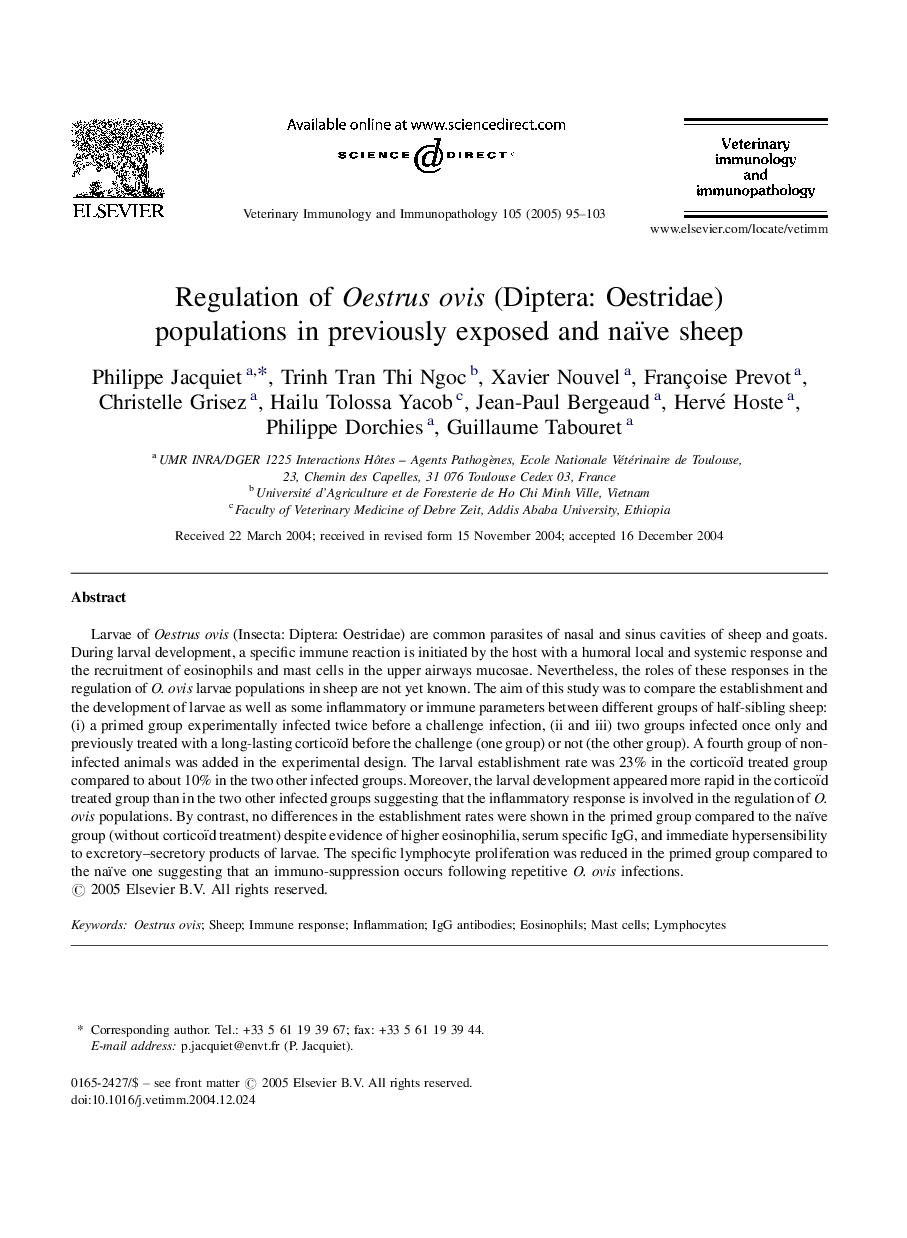| Article ID | Journal | Published Year | Pages | File Type |
|---|---|---|---|---|
| 8987887 | Veterinary Immunology and Immunopathology | 2005 | 9 Pages |
Abstract
Larvae of Oestrus ovis (Insecta: Diptera: Oestridae) are common parasites of nasal and sinus cavities of sheep and goats. During larval development, a specific immune reaction is initiated by the host with a humoral local and systemic response and the recruitment of eosinophils and mast cells in the upper airways mucosae. Nevertheless, the roles of these responses in the regulation of O. ovis larvae populations in sheep are not yet known. The aim of this study was to compare the establishment and the development of larvae as well as some inflammatory or immune parameters between different groups of half-sibling sheep: (i) a primed group experimentally infected twice before a challenge infection, (ii and iii) two groups infected once only and previously treated with a long-lasting corticoïd before the challenge (one group) or not (the other group). A fourth group of non-infected animals was added in the experimental design. The larval establishment rate was 23% in the corticoïd treated group compared to about 10% in the two other infected groups. Moreover, the larval development appeared more rapid in the corticoïd treated group than in the two other infected groups suggesting that the inflammatory response is involved in the regulation of O. ovis populations. By contrast, no differences in the establishment rates were shown in the primed group compared to the naïve group (without corticoïd treatment) despite evidence of higher eosinophilia, serum specific IgG, and immediate hypersensibility to excretory-secretory products of larvae. The specific lymphocyte proliferation was reduced in the primed group compared to the naïve one suggesting that an immuno-suppression occurs following repetitive O. ovis infections.
Related Topics
Life Sciences
Agricultural and Biological Sciences
Animal Science and Zoology
Authors
Philippe Jacquiet, Trinh Tran Thi Ngoc, Xavier Nouvel, Françoise Prevot, Christelle Grisez, Hailu Tolossa Yacob, Jean-Paul Bergeaud, Hervé Hoste, Philippe Dorchies, Guillaume Tabouret,
